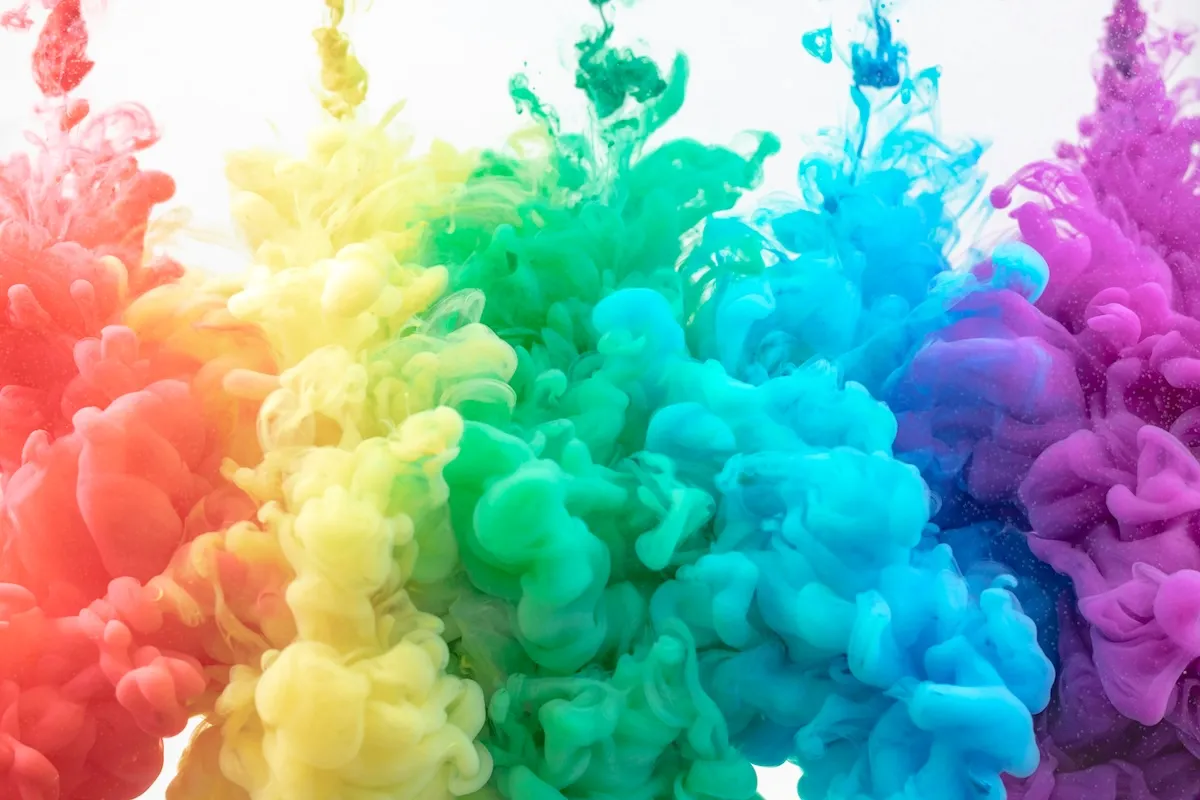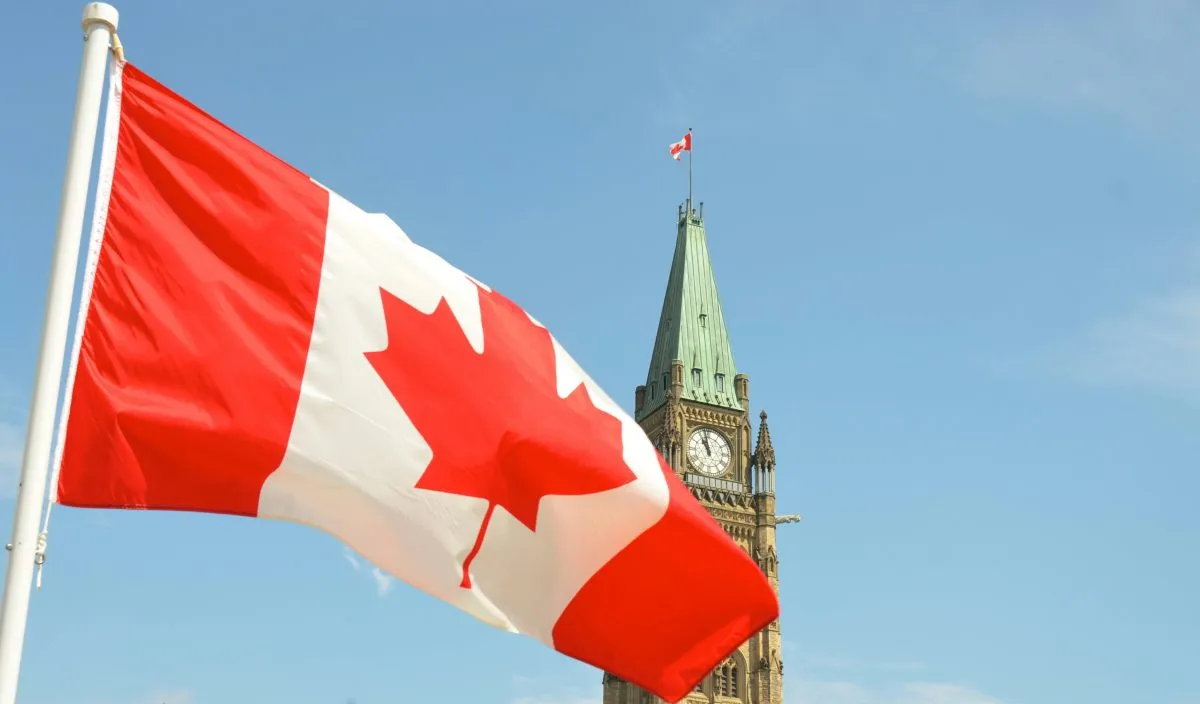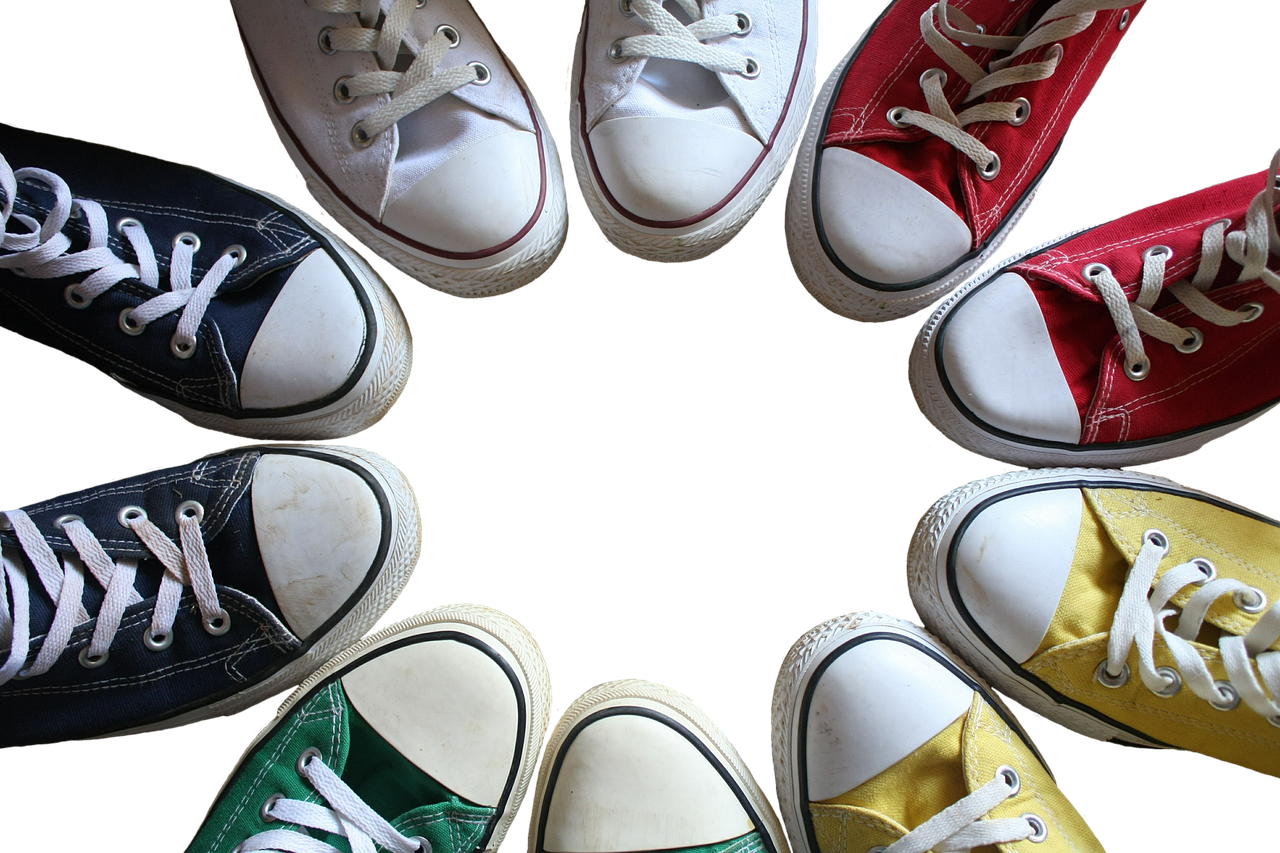Experiential Marketing: 110 Inspiring Examples

Skift Take
In this article, we’ll dive deep into what experiential marketing is, how to best use brand activations for the greatest effect, ways to incorporate activations on a small budget, and how to measure its ROI.
We’ll also get those creative juices flowing with 100 examples of some of the most memorable experiential marketing and brand activation examples out there. Let’s begin with a round-up of some extraordinary experiential marketing campaigns covering all types of experiential marketing and activations.
Top 10 Examples of Experiential Marketing and the Best Brand Activations
It was hard to choose but here are the top 10 great experiential marketing campaigns that really stood out from this post (click to jump straight to the example and read more):
1. Creating a Need: Red Elephant Car Wash
2. Getting Your Message Across without Being Salesy: The Wolf by HP
3. Make Them Think of You: Warm Wishes from the Dry Bar
4. Helping Them Do Something They Never Thought Of: Departure Roulette by Heineken
5. Assisting Them in Slowing Down: No WiFi Zone from KitKat
6. Creating a Visual Depiction of Trends: Saks IT List Townhouse
7. Giving Them a Wow Moment: Climbing Wall by Ikea
8. Playing on Fears” Drunk Driving Makes You a Criminal by Rikki’s Taxi
9. Reaching Out to the Audience: Land’s End Heritage Tour
10. Showing Appreciation: Thank You Machine by TD Bank
TABLE OF CONTENTS
1. What is Experiential Marketing Definition
2. 100 Experiential Marketing Examples
3. 10 Experiential Marketing Case Studies from the Best in the Industry
4. Experiential Marketing Research
5. Experiential Marketing Best Practices
6. Experiential Marketing Strategy / Brand Activation Strategy
7. Experiential Marketing Techniques
8. Trends in Experiential Marketing
9. Experiential Marketing on a Budget
10. Measurement and ROI of Experiential Marketing
What is Experiential Marketing
We know you’ve heard the phrase “experiential marketing” and you probably recognize it as what’s behind some amazing internet content, but what is it exactly? How do you define experiential marketing?
Definition
Experiential marketing focuses on creating an experience for the participant, which then, in turn, evokes an emotion or reaction that is memorable for them.
This memory and emotional reaction generally transfers onto the brand and establishes a positive emotional connection. It offers a win/win for both marketers/brands and participants.
Other words to describe experiential marketing or which can sometimes come under the event activation banner include:
While some Fortune 500 companies are creating experiences that rival blockbuster movies, experiential marketing activations needn’t be costly. It merely requires a focus on creating a WOW! moment and that generally means knowing your audience’s interests and emotional hot buttons.
Intrigued? Check out what we mean with the following examples of experiential marketing campaigns. Experiential marketing: a practical guide to interactive brand experiences.
100 Experiential Marketing Examples
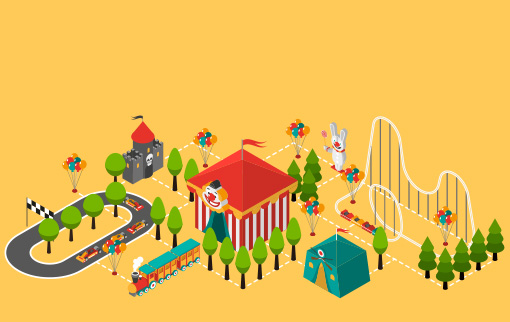
Looking for inspiration from the best examples of experiential marketing? Want to build your own experiential marketing campaign? In this section we have gathered 100 examples of experiential marketing campaigns, covering different types of experiential marketing:
10 Successful Experiential Marketing Campaigns / Brand Activation Campaigns
The following examples showcase exceptional ways to make brands more playful and approachable through inventive brand activation examples.
Volkwagen's Piano Staircase
Ever heard of "The Fun Theory"? Well, it suggests that people will do something if it looks fun. And for Volkswagen, the message of fun involves a piano staircase.
In 2009 the automotive industry turned a regular subway staircase into a giant piano that produces different keys as people walked up and down the staircase.
The aim of the tactic was to encourage environmentally-friendly habits, and according to Volkswagen, fun was the quickest way to modify behavior. The result of this experiential marketing campaign? 66% of people chose the stairs over the escalator at the subway terminal.
Misereor - SocialSwipe Billboard Donations
Today, intangible cashless payments cause many of us to spend and spend without much notice of how much. Meanwhile, many go without basic goods and have to count every coin. Misereor, a German charity organization, came up with what they termed SocialSwipe to engage us in a story during a normal interaction that many of us take for granted.
These digital posters showcase challenges that Misereor seeks to resolve – hunger depicted with a slice of bread, for instance. The screen is fixed with a card reader, and when passersby attempt to swipe a card, the image changes to engage them in an action connected to the cause or challenge – in this case, making it look like their card is cutting the bread.
The Zappos Cupcake Ambush
To build awareness for its new photo app, tech giant Google went out on the streets of Austin, Texas to give out free cupcakes, the catch was that the recipient had to "pay" by taking a photo with their new app.
The brand Zappos didn't just want the cupcakes though, they wanted the people buying the cupcakes. So they set up a dispenser next to Google's food truck that gave out pairs of shoes or a watch to people who fed it with a cupcake.
Cartoon Network’s ‘Rickmobile’
To generate buzz for the return of one of its series, Rick & Morty, Cartoon Network came up with the ‘Rickmobile’, a merchandize-filled truck shaped like series main character Rick Sanchez. The car moved from city to city, and a social media campaign was created to allow fans to follow the car's movement over time.
Whenever the Rickmobile got to a major city, crowds flocked around it to take pictures with the character's face or to go inside to purchase some merchandise.
Say Disney’s Bear Specialist Hospital
Ever been to a bear hospital? Over 8000 children have. To promote Doc McStuffins, Disney came up with popup hospitals across the United Kingdom where kids could bring their damaged bears for treatment by staff dressed up like medical practitioners.
The bear also didn't have to be torn, the children could bring it for regular checkups and the staff would pretend to run tests on the stuffed animal.
Faster 4G Internet Slide Vodafone
Experiential marketing often ties in concepts marketers want their audience to understand in an active representation of that. In this example, Vodafone is rolling out faster internet and so they added a slide next to a mall escalator for a faster experience.
Barbie Mattel
Experiential marketing sometimes makes dreams come true and what little girl didn’t dream of living in a dollhouse? Mattel turned this bus stop into just that as part of its Barbie campaign.
Reduce the Bumps Nivea
Find a common ground in your marketing. Nobody likes cellulite. Most people enjoy popping bubble wrap. So what happens when you put those concepts together? You can reduce the bumps, have fun, and tie in the concept with the product.
Red Elephant Car Wash
See a need (or create one) and fill it. That’s what Red Elephant Car Wash did when they placed faux bird droppings on car windshields. Flip over the unusual business card and you have a new place to try when you get your car cleaned.
Guinness Private Jet
One of the best forms of marketing is the kind that creates an aspirational feel. This is what sets the Guinness Class experience apart.
For a couple of weeks, Guinness ambassadors would dress in flight attendant uniforms branded with the Guinness logo and visit bars across the United Kingdom, where customers got the chance to win various prizes.
The prizes ranged from key chains to a free trip on a private jet to Dublin. All the customers had to do was shake a mobile tablet with the prizes, and one lucky person would win the private jet trip per night.
10 B2B Experiential Marketing Examples
Reaching businesses over people is slightly different in experiential marketing. Businesses will want to see a little more meat. These experiential marketing activations and campaigns deliver that.
Team Summit Dish Network
Turn a bland 40,000-square foot convention center into Main Street USA connecting 13 different areas with a general theme.
“Did You Mean?” MailChimp
Agency: Droga5
MailChimp had some fun with the “Did you mean?” corrections Google performs when you’re searching for something and spell it wrong. The business created funny fake companies with marketing collaterals. Who can forget FailChips, a company that markets the crushed crumbs of potato chips found at the bottom of every bag?
Software Factory CA Technologies
CA Technologies recognized that businesses need help with disruption and innovation. So they created a fun story about providing a tour of the modern software factory.
The Message GE
This experiential marketing campaign uses a media we don’t cover elsewhere in this list, the podcast. GE appeals to its tech-driven audience in this serial podcast about what else? Tech and aliens. Okay, who saw that last part coming? Still, it’s an interesting concept that kept it on top on iTunes while it was produced.
The Wolf HP
HP addresses things like cybersecurity in a Hollywood style in these movie shorts starring Christian Slater. The viewer almost forgets they are commercials. HP also created a landing page to go with this campaign.
Internet of Things World Forum Cisco
This conference is about topics involving the Internet of Things. It’s received multiple awards and is a strong example of content marketing and experiential marketing designed by Cisco.
Minds + Machines GE
Along the same lines as hosting an event as part of experiential marketing is GE’s Minds + Machines that highlights the future of the “industrial landscape” and addresses ways to bring about the “most powerful digital outcomes.”
Smirnoff's Comic Book Event
Smirnoff decided to give its clients a truly immersive experience by inviting guests to a whole new comic book world.
The event venue was set up with human-size comic book graphics that had a consistent storyline. All brand ambassadors were to dress as characters from the comic to keep the fantasy alive all night long.
Bartenders also dressed as characters, and this created an entire night of immersive experiences for their clients. The event left attendees with a memorable experience that revealed Smirnoff’s creativity and powerful branding.
Glamour Magazines Beauty Festival
Glamour magazine teamed up with Fiat to create the dream experience of every fashion enthusiast, targeting fashion entrepreneurs and brands alongside prospective magazine subscribers.
The experience involved consumer attendees getting beauty treatments like manicures, customizable skin care, and every form of body pampering under the sun from top brands. And it soon became the Coachella of the fashion industry, attracting industry influencers and celebrities alike.
Leading makeup and beauty brands got to display their products and have consumers experience them. Brands also got to see the latest trends in the industry as well as ideas they could emulate.
Lloyd’s Register
When Lloyd’s Register noticed an economic downturn was affecting its corporate clients and causing some of them to cancel an “unneeded” expense of their training, the company knew it had to do something and words weren’t enough. Instead, it turned to VR to show its clients the many dangers of accidents and the impacts they have on business. Seeing the effects was much more powerful for clients than simply being told training is important.
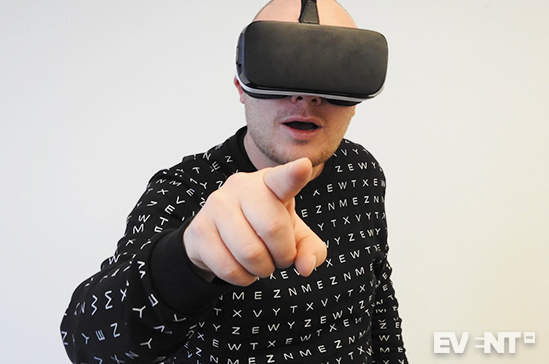
10 Experiential Marketing Interactive Brand Experiences
When customers and potential customers interact with the brand, they enjoy themselves and transfer those warm feelings to the brand. Speaking of brand activations ideas, here are ten that stood out.
Warm Wishes Dry Bar
It can get chilly in the winter so this replica of a hairdryer that blows out warm air for cold passersby creates...dare we say it?…the warm and fuzzies.
Chandon
Chandon created a billboard stuffed with thousands of golden balloons that gave the appearance of champagne bursting out of the bottle. It was an attention grabber.
Travel Wisconsin
This campaign encapsulates the fun of a destination and “seeing” oneself there. Travel Wisconsin married a funhouse mirror with popular local activities, like tubing, and placed the activity where people would be waiting, at a bus stop.
Bright Idea The Economist
The Economist does a lot of experiential marketing. This billboard is captivating in its simplicity. The bulb lights up as someone walks past, insinuating that we all have bright ideas.
Guinness Interactive Innovation
The beer brand offered its Shanghai customers the chance to experience and taste various Guinness beers in an intimate environment. The intimate environment was created to teach guests about the Guinness culture and enhance the smell, taste, and texture of the beer while consumers drank it.
Bates Motel SXSW
A&E’s TV show Bates Motel is creepy enough but what if they offered the ultimate brand experience and let you stay overnight in one of the rooms? At SXSW a few years ago, they did just that. Several “lucky” visitors could spend the night in a replica of the set. And we never heard from them again (just kidding).
Google Home Donut Truck
Agency: Promohire/Optimist
Remember old milk trucks delivering fresh milk to your door? No? What about fresh donuts? That’s what Google Home did with an old H-van painted pink with a pink and white interior. The vehicle served as a pop-up donut shop promoting Google Home’s mini smart home speakers.
Healthy Drive Thru WeightWatchers
Drive thrus are so convenient but most of the food available has people choosing between their health and convenience. No one wants to make that choice so Weight Watchers created a healthy pop-up drive thru to launch its new Flex program. It shows the type of meals on the plan and since they’re made to order, diners can see how simple they are to make.
Escape the Cold with Experience Kissimmee
The balmy breezes of Florida are not a hard sell in cold, winter climates and we’ve seen a lot of campaigns aimed at such things recently. Snowmen in New York holding signs reminding people of warmer weather was a good one and so is zip lining in freezing temps. Check this out:
Next Stop Innovation Coach
This award-winning installation looks like a copper subway car complete with graffiti. But inside it’s a swanky Coach shop with clothes and purses galore.
10 Cool Experiential Marketing Ideas
These examples transfer a concept to the brand.
Kia's Dream Chute Slide
Kia has always been out to solidify its reputation as a cool, fun and youthful brand. And they did this perfectly when the brand created a 2 story slide with built-in cameras for the 2014 launch of Kia Soul in London.
The red engine slide was simply amazing, with participants able to get images of their slide-face.
Ghostbusters Marshmallow Man
Based on research that revealed how unexpected events can cause pleasure responses, commuters at Waterloo station in London were thrilled to see the Stay Puft Marshmallow Man coming out through the floor at the station.
They certainly achieved their aim in surprising consumers with a delightfully unexpected event.
Refreshing Shower Sprite
Meet a customer need and get their attention. That’s what Sprite did when it set up pop-up showers at the beach.
Baltika Beer
Baltika Beer mounted replicas of their beer cans midway up subway car poles where riders would grab to stabilize themselves. Thus the company “forced” people to get the product in their hands.
Cloudy with a Chance of Meatballs
When the Cloudy with a Chance of Meatballs movie was about to come out, the promotions company wanted to show people what it would be like to be a part of the film. Since no one wants a cheeseburger on the head, they created sculptures on the sidewalk to get people talking.
Oldtimer Rest Stop
Grabbing attention often involves large sizes but it also helps when you can tell people exactly what you offer without forcing them to think about it like with this oversized billboard.
Polaroid
This treatment helps people see what it’s like to use the product by “picturing” people in the frame of a taxi door. Passersby can enjoy live pictures.
Take a Chance or Fly Air France
This funny campaign points out that for just a little bit more you can eat dinner, enjoy champagne, and get WiFi.
WaterAid's Hope Lockers
WaterAid, with the help of MediaMonks and Proximity, created Hope Lockers, which played a video when swimmers opened their lockers.
The video contained information on the plight of children who live without clean water and showed swimmers the number of kids that died due to polluted water in the space of time they were swimming.
Once the message had completed, the swimmer was asked if they'd want their coin returned or whether they'd prefer to donate it to charity for the cause.
Departure Roulette Heineken
The idea behind this challenge at JFK airport was whether travelers were brave enough to ditch their current travel plans for whatever came up on the departure roulette board. The Heineken YouTube video alone had over two million views (total).
10 Affordable Experiential Event Marketing Examples
Experiential marketing needn’t be blockbuster expensive. There are ways to incorporate it on a smaller scale.
Take a Chance Kate Spade
When Kate Spade launched its new stationery, it used an interactive wall in the St. Louis store to engage customers. The sign on the wall of brightly colored envelopes invited guests to “Take a Chance.” Suggestions like “smile at a stranger” and “have cake for breakfast” encouraged openers to try something new.
Bazaar Magazine
Ever dream of being a cover model? Bazaar Magazine helped passerby realize that dream with this cute photo opp. Sometimes a successful experiential marketing campaign simply allows participants to imagine what life might have been.
Adidas Jump Store
Pop-up stores are naturally intriguing, but Adidas' ‘jump store’ was out of the box. Partnering with Chicago Bulls point guard Derrick Rose, the brand challenged fans to win a pair of trainers placed on a 10-foot shelf by jumping to take them off.
The event created a memorable and exciting experience for all the kids who participated in it.
Ikea's Big Sleepover
In response to a customer on Facebook who said "I wish I could have a sleepover in Ikea," Ikea gave 100 customers the opportunity to have a sleepover at their warehouse. The people chosen got massages, manicures and a bedtime story anchored by a reality TV star.
“Ultimate Day Out” Nutella
It’s fun to imagine your ideal day. Maybe it consists of chocolate in some form. Nutella wants that to be true. They created a contest that would give someone their ultimate day out as long as they could draw it on a giant slice of bread covered with Nutella.
3D Oreos at SXSW Festival
At SXSW, Oreos parent company Mondelez International crafted an idea of a combination of the classic oreo cookies, Twitter and 3D printing. The idea was to use trending flavors on Twitter to create a flavor palette on the 3D printer and allow attendees to create their own unique oreo flavor with the printer.
Big Babol XXL Bubble Gum
Want to prove that your gum blows bigger bubbles than those others? Use a campaign that shows people just how large those bubbles can get. Wonder what happened when they popped.
No WiFi Zone KitKat
Perhaps you want your group to take a break and get back to good ole communication. KitKat did just that with its WiFi-Free hotspots. You can be assured people took notice of that campaign.
Manhole Covers Folgers Coffee
The steam that comes up from manholes was the perfect backdrop for this campaign. Folgers coffee used that steam and a cold day to create mini reminders of why everyone loves a good cup of hot coffee on a cold day.
Ride a Bike, Get a Treat
It’s amazing what people will do just to get something they could go to a store and buy. In this installation, participants could ride a bike, play a game, and get a drink from the vending machine when they accomplished the goal.
10 Impressive Experiential Marketing Events and Event Activations
These installations were designed with the Wow! factor in mind.
Design Touch Event Tokyo
Ever see a beautiful plant and just want to touch it? You’re not the only one and in this display, visitors are encouraged to do so. When they do, a brilliant light display surprises everyone. This activation was created as part of the Design Touch Event, which is a month-long celebration of experiential elements.
HBO's Escape Rooms
Escape rooms are games in which participants are locked inside a room, and to escape, they have to solve some sort of mystery. In recent years, they've been gaining momentum.
HBO took advantage of the game's rising popularity and created escape rooms at the SXSW festival with each room having a theme of one of its popular shows. The shows included were Game of Thrones, Silicon Valley and Veep.
It was an interesting way to bring it's fictional characters to life and get fans immersed in a different world.
Run Club Nike
Designer: Coordination Asia
This installation in Shanghai’s Times Square changes the indoor running experience for those who participated. As they ran, their stats were displayed to everyone inside and out so that people could cheer on participants. The environment is very high tech.
Jeep Experiential Space
Not only is this fun pop-up a former shipping container but it’s also decked out on the inside to provide Jeep lovers with a variety of fun things to do including virtually test driving a Jeep and getting a feel for the Jeep lifestyle.
Aston Martin On Ice
How would it feel to be James Bond for a day? Well, Aston Martin's owners got the chance to answer that question. In 2015, Aston Martin opened a track in the Colorado Rockies and invited people to push the cars to the limits around a snowy track in the mountains, just like a scene out of 007.
The experience was shared on social media platforms and this boosted the brand's awareness.
Delta's Stillness Practice
Delta Airlines knew that frequent travel can be stressful and exhausting, so at a 2015 TED conference, they decided to remind their customers of the importance of stillness.
Participants were given an orb and led to a glass room. Placing their hands upon the orb in front of them, biometric sensors capable of syncing their heart rate with the lights in the room would activate. The orb would then take in the lowest recorded heart rate and pulse a calm light that matched it.
The campaign pulled in over 9 million Twitter impressions.
Esurance and Puppies
Mondays stink. Esurance knows this. Following their new campaign “Surprisingly Painless,” they brought puppies to play in tents in ten cities. That’s how you bring a smile to people!
Coca Cola's Small World Vending Machines
Coca Cola sought to go beyond simply promoting its product to deliver a larger message: to fix the fractured relationship between Pakistan and India.
They placed high-tech vending machines in major malls in Lahore and New Delhi. These machines were capable of enabling face-to-face interactions with someone in the other nation. The aim was to work together to accomplish various tasks on the screen by mirroring each other's movements.
Build a Better Bay Area Google
Crowdsourcing how donations are spent is a great way to build community and that’s exactly what Google did with the Google Impact Challenge. Google raised $5.5 million for community nonprofits and then set up mobile voting kiosks to figure out how to best spend it.
#GetTeleported Marriott Hotels
People make a lot of choices. Whenever they do it’s common to wonder where the path would have taken them if they chose another one. Marriott capitalizes on the “what ifs” of vacations with their virtual reality teleporters where participants can feel the sand beneath their toes and a host of other experiences.
10 Outrageous and Inspiring Experiential Marketing Examples
These “over the top” examples are lots of fun and draw a crowd.
SAMCOM Anheuser-Busch InBev
Experiential marketing 2018. Go big or go home seems to be Anheuser-Busch’s model when it comes to their three-day sales conference. While they always feature experiential elements, their 2018 meeting leaned more toward immersive experience. First, they held an opening parade down Bourbon Street. In its immersion zone, the company featured each of its brands. Each brand included an activation. For instance, Bud Light World featured a moment with the king and queen of their “Dilly Dilly” campaign.
Climbing Wall Ikea
When Ikea opened its new store in Clermont-Ferrand, people celebrated by literally climbing the wall. The wall was a replica of an apartment turned vertical.
Apple Optical Shop Window
Pictures can say it all. Tell people exactly how you can help in one image.
The Fast Lane Volkswagen
What happens when you take grocery carts and add skateboards? Grocery shopping goes a little bit faster (and becomes more fun).
Bottle Bank Arcade
Improve recycling efforts by making it fun. Just press start and insert your bottles. Collect points. Enjoy the flashing lights and video game sounds.
PacMan Bud Light
Guests played a real physical PacMan game at this event for the Super Bowl. Check out the size of that quarter.
Giant Seesaws
Located on the Place de Festival in Montreal, thirty lit, adult-sized seesaws transformed the space into an adult playground.
Burbu Car Wash
This unique car wash offers a 25-minute cleaning process. 25 minutes for what you might ask? The business will show you through transparent operations, which are put on in a very theatrical way. The surroundings are almost entirely blue, except for the white ball pit and swing in the VIP section.
JetBlue IceBreaker
To promote their new flights from New York to Palm Springs JetBlue placed various summer accessories in a massive ice block and let New Yorkers know they could take anything they wanted from the Ice. The catch was that people had to use what they had on them to break the ice and claim the prize.
Kiss & Tell Fresh
Makeup company Fresh invited women in Manhattan to a glass truck for a mobile makeover. They received a lip product application of their choosing and then were given the option to “tell” by sending an e-card or a traditional postcard with their new look.
10 Experiential Events That Challenged Audience Thinking
Nonprofits sometimes believe experiential marketing is too expensive but if you’re looking for a big impact, it’s ideal.
What Goes Around Comes Around Poster Campaign Global Coalition for Peace
This clever poster used the shape of the column it would be wrapped around to illustrate their thinking.
Reusablebags.com
Escalators are a great place for experiential marketing because they are at once fun and perilous. This campaign plays up the dangerous teeth at the end while also calling attention to the plight of sea creatures that eat plastic bags.
Antarctica Kilroy Travels
This example pulls double duty. It uses a physical depiction of what many of us think of when considering Antarctica, ice, and it uses fear of missing out due to melting and climate change.
WWF and Panasonic
This example also addresses climate change with a polar bear made of ice that slowly melts to reveal only a skeleton.
Drunk Driving Makes You a Criminal Rikkis Taxi
This campaign poster resembled a height chart used in police stations. The posters were hung on walls across from the sink in bars and restaurants conveying the message that driving drunk makes you a criminal. The clever campaign illustrated for people how you could easily be arrested and what exactly that would look like.
“Paper Panda” in Paris
In order to bring meaning to just how few pandas are left in the world, this group created paper mache pandas and placed them around many large cities such as Paris, Berlin, and Bordeaux. Every panda represents 1,600 pandas and each sculpture has a different face and attitude.
Sweeper United Nations Mine Action Service
Unless you’ve lived in a war-torn country, it’s difficult to understand the perils of living with mines. The United Nations Mine Action Service looked to create that understanding through an exhibit at the New Museum in New York City. The event simulated walking through a minefield using beacons and an app.
Flash Drives for Freedom
Check out this wall from SXSW. Flash drives are a way to get information into North Korea. This organization found a creative idea to garner attention and increase donations for flash drives.
“Give Warmth” Caritas Charity
Filling a need is also something we see over and over in experiential marketing. Caritas Charity and Coca-Cola wanted to do something to raise money for the homeless. Instead of asking people to donate money to that directly, they offered them a heated bus shelter for a euro. That money was then donated to the program.
Imagine a World March of Dimes
For their 80th anniversary, the March of Dimes wanted to do something different from the average fundraiser so they created a free, interactive, pop-up exhibit. The exhibit is housed in a whimsical land of interactive games and puzzles, a selfie station, and flower-crown-making area, as well as a diaper changing area. It brings together the joy of childhood in order to help those who are not born healthy.
10 Retail Experiential Marketing and the Best "In Store" Activations
Pop-ups have become a very large component of experiential marketing as they allow stores to reach a new audience and try out locations.
TopShop Water Slide
Through the powers of virtual reality, TopShop created a water slide in its London headquarters that took participants through Oxford Street as they went down the waterslide.
Benetton Interactive Windows
This collection of interactive windows at the Benetton stores causes passersby to stop and check them out. They can even try on some clothes.
Fortnum & Mason Experience
Fortnum & Mason is known for its sophisticated wines, luxury hampers, loose leaf tea and other luxury items. The brand decided to take their customers through a tour of how they make whiskey in their famous Glenfiddich Whiskey Distillery using virtual reality as well as loose leaf tea tasting.
House of Vans
The vans store created a ramp space within their store for young people aged 5 and up, for customers to not only shop but socialize with each other. It was built for skaters and is free to use for customers.
TOMS Virtual Reality Headsets
Experiential marketing and cause marketing are perfect complements for each other. When you need consumers to understand and empathize with a bigger mission, engaging all their senses is the best way to get them to pay attention. TOMS placed virtual reality headsets in 100 stores so shoppers could see the effect their ‘one for one’ charity campaign is having on local people in Peru. Talk about making people feel good about moving product.
Kate Spade Igloo Popup
Bryant Park in New York City is abuzz with the holiday spirit at Christmas. The pop-up market and Christmas lights make it a delightful time for locals and tourists. This Kate Spade pop-up store added to the holiday experience as it was in the shape of an igloo and lit from inside.
Louis Vuitton Launch Party
This pretty pop-up is too cute to miss. It nearly resembles a Faberge Egg in its beguiling shape and the bright red on white design is sure to make an audience eager with anticipation of the launch.
Valentino Pop-up Shop
This display is too gorgeous not to go in. Then again, it’s so pretty passersby may just want to stand in front of it taking selfies all day.
Roomvertising Ikea
Ikea created this pop-up in the shape of a 20x20 apartment to promote its store opening in Brooklyn. Inside it gives great ideas for decorating a small space. Functional and cute, just like its offerings.
Fine Whisky Emporium Dewars
Dewars had a pop-up commissioned and then hit the road to increase their audience. Riding the tiny house craze, they appealed to a new market that may have formerly believed whisky was an “old person’s drink.”
10 Big Budget Experiential Marketing Ideas
Get your wallets out for these big experiential marketing ideas.
The Simpsons Kwik-E-Mart 20th Century Fox
In order to bring some hype to The Simpsons Movie, 20th Century Fox paired up with 7-Eleven to transform several locations into Simpson-esque stores. The stores also carried some of Homer’s favorite brands.
IFS Shopping Center Candy Carpet
To promote the IFS shopping center in Chengdu China, 13 tons of colored candy covering over 13,900 square feet were carefully fitted together to make a newsworthy candy carpet.
Indoor Streetscape MillerCoors
MillerCoors took over the Austin Convention Center and created an indoor streetscape for the evening. They recreated the capital city’s Rainey Street.
Coachella Absolut Lime
This installation let the branding guide the theme and atmosphere, a verdant green. The only problem is that it’s hard to achieve in the desert. Using a 20’ lime tree, hedges, and lights as well as a faux lime photo booth backdrop, there was no mistaking the brand. They served about 7,000 people a day.
Casinò Di Venezia Giant Roulette Wheel
The Casino Di Venezia's campaign at Marco Polo airport turned the typical black belt conveyor belt into a giant roulette wheel.
National Geographic Encounter: Ocean Odyssey
This experience is more immersive and less marketing but still amazing so we included it. Located in Times Square, it provides adventurers with a look into the seas and interactive experiences with dolphins, rays, and humpback whales. Hard to believe there is absolutely no water involved.
Thank You Machine TD Bank
Fulfilling personalized desires will improve loyalty. Take a look at what this bank did for customers.
City of Taipei
Great experiential marketing examples 2017. In order to garner more support for the 2017 Summer Universiade and build a buzz, the City of Taipei transformed several of their subway cars into fields, pools, and other event backgrounds. They lined the cars with laminate floorings that look like track and lane lines.
Christmas Miracle WestJet
Again, we see the joy behind making someone’s wishes come true. WestJet asked travelers what they wanted for Christmas and while they flew, the busy WestJet elves went to work to make it happen. The gifts were waiting for them when they arrived.
Unlock the 007 in You SkyFall Coca-Cola
This creative contest challenged participants to unlock their inner James Bond and take on a series of timed challenges. It played upon a desire to achieve and an interest in seeing themselves as something else.
10 Experiential Marketing Case Studies from the Best in the Industry
If you’re considering experiential marketing, you likely want to know how well it works. Here are a few examples from some of the top experiential marketing campaigns and best experiential marketing companies in the world.
“Chalkbot” Nike
The first experiential marketing case study is one of the seminal experiential marketing pieces where social meets world. In it, a roving robot was created to “write” messages along the race route for the Tour de France participants. It was originally designed to celebrate Lance Armstrong’s Livestrong message.
While not its main goal, it increased apparel sales by 46%.
“Replay” Gatorade
Agency: TBWA/Chiat/Day
There’s little more frustrating than a tie among cross-town rivals in high school football. Gatorade facilitated a rematch fifteen years after the original game and brought the audience in through webisodes and a TV series. The main goal was to extend the appeal of the popular sports beverage past current athletes and into a market of 30-something men.
The program cost $225,000 in paid media and earned $3.5 million. It also increased Gatorade sales by 63%.
Missguided Unicorns
Missguided is a clothing store that caters to millennial females who are into all things pop culture, and to that effect, decided to introduce a unicorn theme to their first physical store in the United Kingdom.
The vending machines in the store were literally selling the tears and dreams of the mythical creatures.
Tweet for Your Feet Old Navy
In order to build a buzz around their $1 flip flop sale, Old Navy created several flip flop vending machines. When participants tweeted their favorite vacation spot to wear Old Navy flip flops and used the hashtag, a pair of flip flops was dispensed.
The tactic generated 9,000 tweets that mentioned Old Navy, creating 12 million social media impressions. The campaign also got coverage in Forbes, AdAge, and InStyle magazine.
Sweeper United Nations Mine Action Service
We wrote about this example under the section about experiential marketing that changes minds. But we wanted to share the success of the campaign as well.
When UNMAS used their app and beacon technology to show the perils of walking through an area that could contain mines, they saw a 152% increase in donations from the year before and a 250% increase in traffic to their website.
Aventura Mall CUR8 Room
This pop-up helped students get ready to go back to school by allowing them to work with local designers to come up with their own creative designs for sneakers, backpacks, and phone cases.
2,000 visitors came by and that yielded 1.5 million+ social media impressions.
CUR8 Experience at Aventura Mall from Turnberry Media on Vimeo.
Time Warner Cable Super Bowl Event
Time Warner Cable offered a 60-minute tour inside a cable box using interactive booths.
25,000 people took the tour, which yielded 455 public relations placements and 1.5 billion impressions.
Red Bull Stratos Jump
Red Bull, popularly known for its “Red Bull Gives You Wings” slogan, decided to “test” that theory with this experiential marketing stunt. Skydiver Felix Baumgartner jumped from space and the jump was broadcast live as a webcast in 2012.
It garnered an impressive 52 million views and sales increased 7% in the six months after the campaign. Red Bull experiential marketing is great at getting people excited and keeping fans loyal to their brand.
Facebook IQ
Facebook is easy to use but so many of its users don’t employ basic personalization and security on their accounts. Thus the Facebook IQ event. At this physical event, attendees learned the online shoppers’ conversion process when using social media to make buying decisions. Facebook also provided a spot full of social media photo ops.
93% of the 1,500 attendees said the event provided them with valuable insights on how to use Facebook for business.
Flash Drives for Freedom Human Rights Foundation
As mentioned above, Flash Drives for Freedom used SXSW to show people that information sharing is important, especially so in a country where exchange is not supported.
At the event, 125,000 drives were donated/pledged, which allowed them to get 50M hours of reading material to people in North Korea. The group received $6.4M of free media coverage of their efforts and program and 571M media impressions.
Hopefully, you are fired up by these experiential marketing examples and case studies. Let’s look at the research and how you can adapt this to your own event activations.
Research
EXPERIENTIAL MARKETING
The numbers behind the marketing are always important so let’s talk about the data behind experiential marketing.

In a poll conducted by Event MB, 32% of event planners saw experiential marketing as a priority for 2018. While that’s not a huge number, it is indicative of things to come.
Since you likely won’t create an experiential marketing campaign overnight it’s important to note that this is becoming more important in the industry and it definitely is to attendees. And we’re not alone in speculating on this. 58% of event planners saw demand for experiential increasing.
Next, let’s talk about the younger generation.
First, the under-35 generation prefers experiences over material possessions. They admitted that they are willing to pay more for them. According to a study by Harris Group, 72% of the Millennials polled preferred to spend money on experiences over things.
Next, it’s important to note that they don’t just want the experiences, they enjoy sharing them with their tribe.
Harris Group also found that spending on experiences and live events as a total of US spending has risen 70% since 1987. It’s surmised that a lot of this has to do with a desire to share experiences, be the first to do so, and share it with their tribe through social media. There’s a fear of missing out. They also use social media sharing to connect with people who are experiencing the same thing.
Experiential marketing is not only creating tons of content, it is also assisting in generating data but it’s up to the event planner or marketer to use it in an effective way.
Experiential Marketing Best Practices
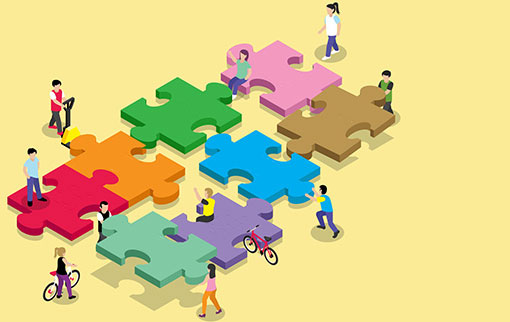
For the most effective experiential marketing, you want to make an impression. But if you stop there, you’re only providing an experience. You’re losing the marketing component. Nearly all of the 100 top experiential marketing campaigns above had a product or service tie-in. They had clever ways to incorporate the brand message with the experience. They made participants afraid of missing out or energized to try something new and thus try their product. The examples used marketing messages in visual ways so the ideas stayed with the audience. They also incorporated social media in meaningful ways so as not to lose the momentum they created with the experience.
In addition to the marketing component and the brand strategy, which we’ll get into in a bit, there are a few things to keep in mind if you want to be an experiential marketing specialist:
Know your audience. You can’t appeal to them if you don’t know what they like.
Use the basics of marketing things like fear of missing out, playing up an interesting experience, and enabling social sharing are important in experiential marketing. Have a social media strategy in place for the campaign.
Hire someone who can help you tell the story. A PR professional is a smart spend because even though you’re going to get earned media through experiential marketing, you need someone to get the ball rolling.
Use the content you’re creating and the data you’re collecting.
Create activities that are attendee or customer focused and employ an active component. This isn’t about getting your audience to watch your new marketing video. You need an active component to drive engagement.
Employ branding. If you go to great lengths to attract a crowd the last thing you want is people asking, “What was the point of that?”. You want them to know who was behind the experiential marketing or it won’t be a branding exercise and thus won’t be successful.
Use video. In a good experiential marketing event, participants will capture it on video and share it to social media. But since you want reliable footage of good quality, the only way to ensure that is by doing it yourself.
Enable shares. Social media is essential to a good campaign. Again, others will probably do this for you, but sharing it with your audience will help you build momentum, get people talking, and help those who weren’t in attendance enjoy it as well.
Here are a few additional considerations according to event planners:
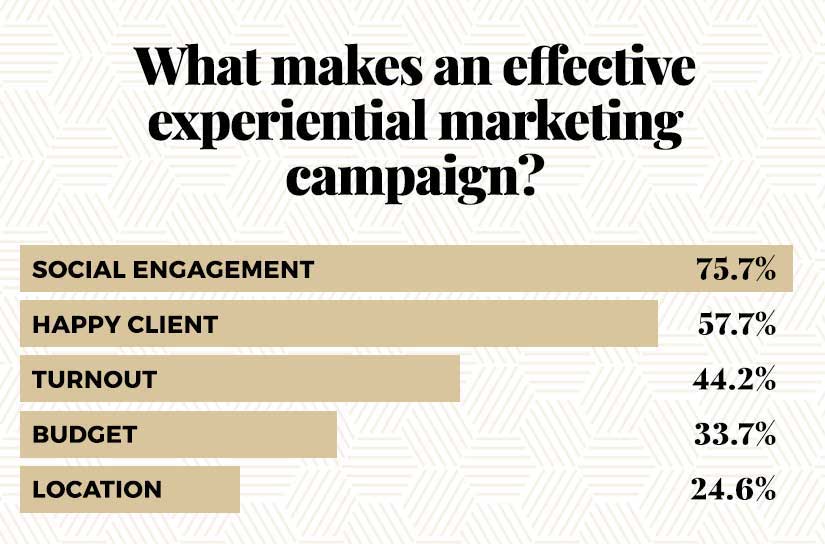
Experiential Marketing Strategy / Brand Activation Strategy
So why is experiential marketing becoming so hot? Two reasons: because it’s memorable and effective. Years ago, advertising was a fun medium. People would talk about clever commercials. There were special television shows dedicated to the “funniest commercials of the year.” These days, consumers are finding ways to avoid commercials. They’re:
Commercials and advertisements are having a harder time reaching the target audience. Plus, experiential marketing is doing something advertising can’t. It’s creating an emotional connection between brands and consumers. Ads used to be able to do this with some humor. Today’s audiences are savvier and expect more than just a clever line. They want interaction. That’s difficult in a one-sided broadcast or printed page.
8 Critical Steps to Developing a Successful Experiential Marketing Strategy
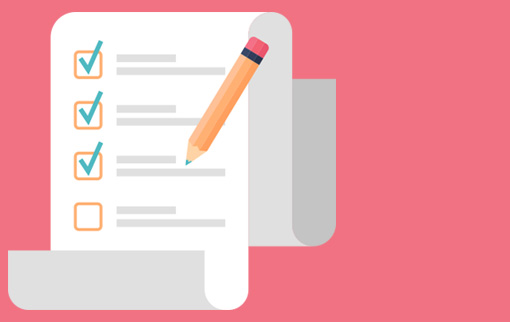
But experiential marketing isn’t about shock value or Hollywood production. It’s still marketing, which means it requires a marketing strategy and a solid brand activation plan. Here’s how you can accomplish top experiential marketing campaigns:
Know your audience.
As we mentioned before, knowing your audience is incredibly important when it comes to understanding what will wow them. What is effective in connecting one group, won’t be with another.
Define your goals and your budget.
What do you plan to accomplish and how much do you have to spend?
Measure where you are today, before the event.
After you know what you’re trying to accomplish figure out the metrics that will help you measure success. Then record those metrics as they are at this moment. All good data measurement begins with a baseline.
Know this is not a one-person job.
The vision and strategy may be the brainchild of one person but the implementation of an event requires a team. Assemble one you can count on. Look for those with experiential or guerilla marketing experience.
Get creative.
Wow! moments are never derived from day-to-day experiences. If your audience has already seen or heard what you’re trying to do, it won’t have that special amazement factor. Shoot for something they’ve never seen.
Bring your “A” attitude.
Fun is very important in experiential marketing. Bring a good attitude and always remember the audience will feed off of the energy at your event. Keep it high.
Don’t forget the content value.
Experiential marketing is a social media food source. Capitalize on that and ensure that you capture the moments, share them, and use those hashtags.
Use your baseline and gauge your success against it.
Remember those metrics you established in step 3? Use those to chart your success.
Experiential Marketing Techniques

At this point, we’ve shown you some amazing experiential marketing ideas. We’ve covered how important a strategy is and how you can create one.
Do you still want more?
Of course you do!
We still haven’t covered exactly how you would go about creating a successful experiential marketing campaign. Let’s move past strategy and get into implementation of your brand activation plan.
Create an Immersive Experience for a Deeper Connection
This doesn’t need to mean lengthy, but you want your audience coming away from the installation feeling a new connection to your brand. For instance, think of someone who’s never felt what it’s like to sit in a hot tub. You can spend all day describing what it’s like with vivid words. You can show them a video of others enjoying it. But the biggest way to make an impression on them is by shoving them in giving them access to enjoy it themselves.
Details Make an Experiential Marketing Campaign
Here are a few additional things you need to do when creating your experiential marketing campaign.
-
Scout out a public space. Foot traffic is essential to drawing a crowd. Don’t forget to look into permits or other legalities needed.
-
Plan out the interactive component and make arrangements for what you’ll need on-site including samples, technology, presenters, etc.
-
Create a script to build excitement and engagement among the crowd.
-
Decide whether you will create a pop-up retail situation, take orders, gather leads, or simply work towards making an impression.
-
Decide whether this is a one-day event, something that lasts for a week, is part of a national or international tour, or seasonal.
-
Plan a contest as part of your event. Contests fuel participation.
-
Add an emotional component. This is an extra step and not essential but it does add a special touch to your experiential marketing. In 2013, Milka sold 10 million chocolate bars that were missing a piece. Inside it asked the buyer if they wanted the missing piece to be sent to them or to a friend. It was a nice way to connect and one that didn’t require a crowd but did get people talking.
-
Create a social media plan. If things go well, your event will get a lot of talk. That’s why everything must be branded and a social media hashtag should be used prominently so that when people talk, the conversations can be found easily. Don’t just plan on tweeting or posting a video. Brainstorm creative ways to get the most social media coverage. Tease your audience before, cover it live, and then show those who weren’t there how fun it was.
-
Don’t forget the call to action. Don’t get people all worked up without giving them something to do. It’s important to drive them to action when the current is in your favor.
As the research proves, experience is particularly important to a lot of younger participants. They enjoy it and they share it. They can be a powerful component of your earned media.
Reaching a Younger Generation with Experiential Marketing
Keep the following things in mind if you are trying to attract those under 35.
When executed correctly, your campaign should provide fuel for their sharing desire. This group is tech-savvy, the largest demographic on the visual sharing site Instagram, and largely well-versed in social media. That means if you’re targeting an under-35 crowd as part of your experiential marketing campaign, they’ll likely cover it for you on social media - an added bonus when it comes to increasing your audience. According to Splash, 81% of people under 35 admitted to sharing pictures on social media at a branded event.
Create an image-worthy campaign. Knowing that the under-35 set enjoys image sites and actively shares on them, you should ensure your experiential marketing event is image-worthy. One of the ways to do that is to give out branded swag, tasters, or other social media bait. You can even create a contest around it, involving uploading pictures or voting for images.
Give them a look. Those under-35 also value authenticity when it comes to brands and the ability to “peer behind the curtains” of their favorite brands. Experiential marketing does both of these things. It shows them another side and allows an exuberant personality to shine through, which stirs energy, one of the things that makes for a great event.
Provide a feel-good factor. The younger generation will pay more for locally sourced produce and small business offerings. They like to feel they’re supporting something of value. Look for ways to give that to them.
How to Use Experiential Marketing on a Budget
As we showed earlier, experiential marketing is about how you make participants feel, not how much money is spent. While your options may be larger with an immense budget, there are still plenty of ways to get your audience’s attention with a lighter wallet. You can:
-
Get Creative.
Creativity rules when your budget is on the smaller side. Get your thinking cap on and dream of ways you can make an impression on the crowd. Think about what you want people to take away about your company as a starting point.
-
Use the Five Senses.
Our senses create some of our most vivid memories. Think back to childhood and I bet there are smells that reignite memories good or bad. If you want to create an indelible memory, look for ways to involve the audience’s five senses.
-
Provide Samples Creatively.
If you sell a product, look for ways to sample your item. This could involve pop-up tastings or on-the-spot free trials. This tactic moves products for two reasons. If you have a great one, sampling will get people interested. But most people also feel obligated when you give them something to give you something (like a sale or a donation) in return.
-
Go Big or Go Home.
Flash mobs cause people to turn around and watch and they aren’t expensive to organize. Many of them are comprised of volunteers. You can use flash mob dancers, singers, or even stunt people.
-
Do Something Shocking.
Take a lesson from Nestle’s experiential marketing campaign for Natural Bliss coffee creamer. The point behind the product is that it is natural. What better way to illustrate that than by setting up a pop-up coffee shop with baristas in au naturel attire and body paint. It was shocking but fairly inexpensive. I’m not sure what the health department would think of nudists serving hot beverages but it definitely got people to pay attention.
-
Grassroots Marketing.
Grassroots or guerilla marketing involves a group of marketing foot soldiers. Just don’t use the kind with annoying clipboards who chase you down (ahem, Delta Airlines credit card). Most of us want to be part of the crowd. There’s safety in it and there’s often a fear of missing out if you believe everyone else is doing it. Assembling brand ambassadors can be done relatively inexpensively if people already love your brand. Send these folks to the street or encourage them to create video footage on behalf of your brand.
Trends in Experiential Marketing
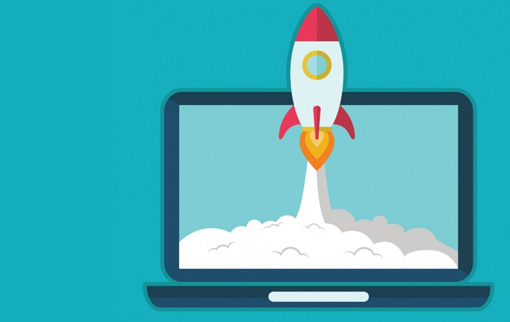
After looking at hundreds of great experiential marketing campaigns from some of the best experiential marketing companies in the world, here’s what we uncovered about the hottest trends in experiential marketing:
Which brings us to...
Measurement and ROI of Experiential Marketing
Return on investment is becoming increasingly important to brands and companies. Marketers want to see if their creativity is paying off. Most often this requires deciding what your goal is, how you will measure it, establishing a baseline, collecting data, and then analyzing it.
But it’s the kind of data that is most important when deciding return on investment. What you measure must be related to your goal. For instance, if brand recognition is important to you and the reason behind your experiential marketing, measuring views of your video and new followers are great ideas. However, if you wanted to increase sales, views only benefit you if they translate to a purchase. In that case, you’d want to measure sales after the campaign versus sales before. Also, note any other marketing strategies you’re using at that time.
To become an experiential marketing specialist always connect your data to your goal or what you’re measuring won’t have any application to your revenue.
IN CONCLUSION
Experiential marketing is becoming an expectation. Experiences mean more to people as they continue to expect to be amazed. You don’t need a huge budget to embrace this trend but you do need a good knowledge of your audience, what they want, what they fear, and what delights them beyond measure.
Now onto you:


